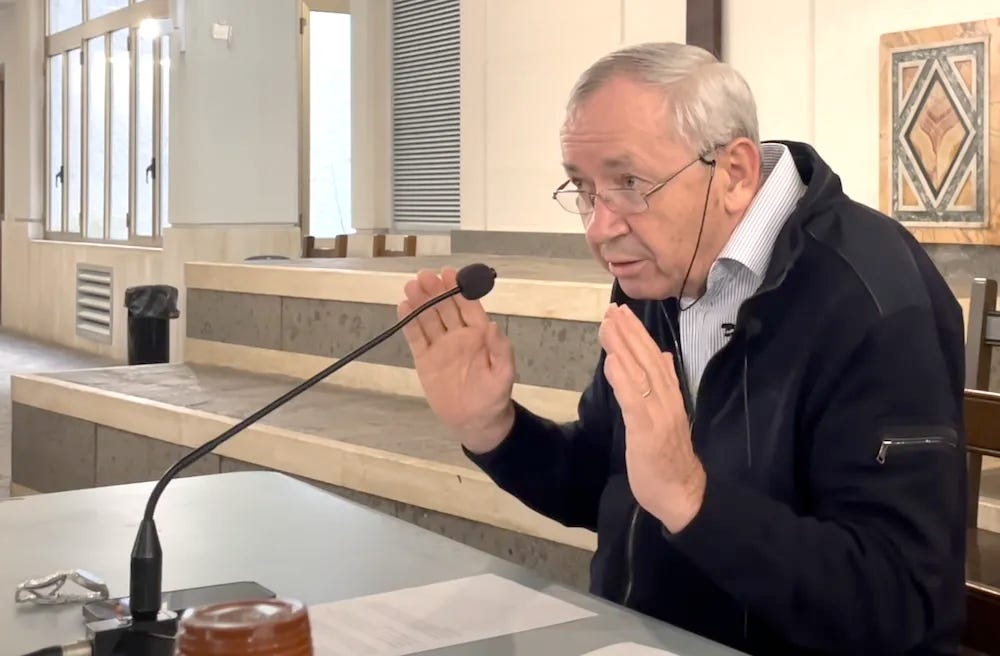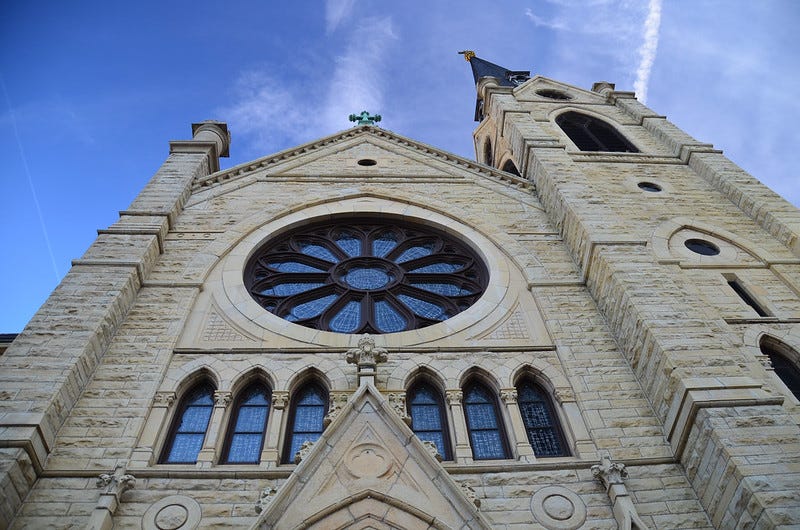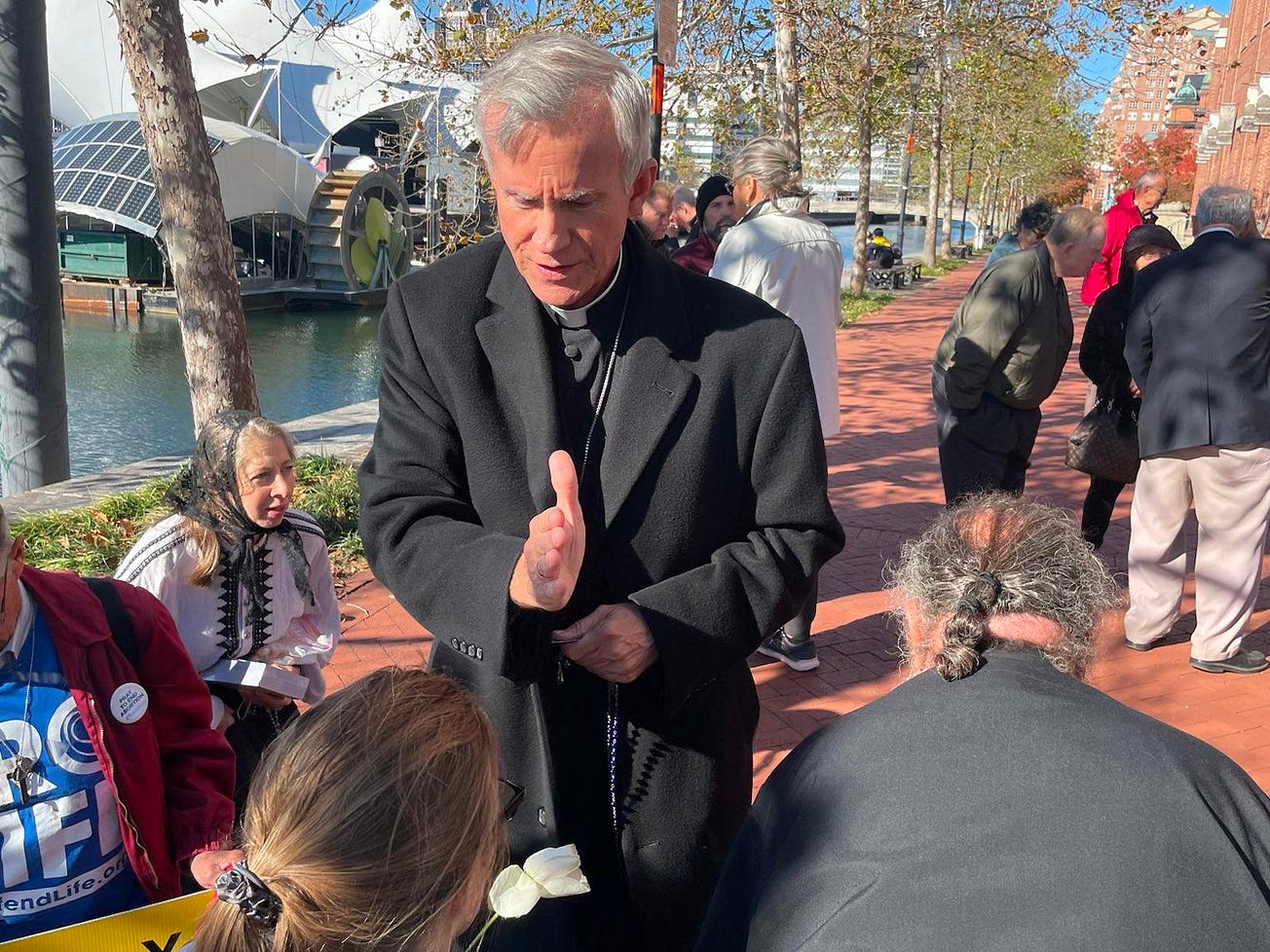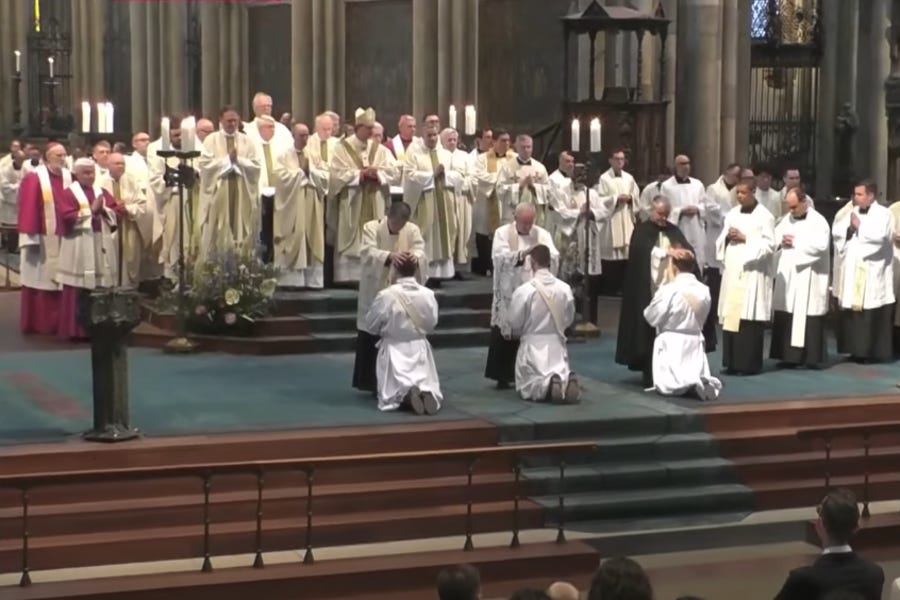The Dicastery for the Doctrine of the Faith has broadened its investigation into Fr. Marko Rupnik after receiving new evidence against the religious artist, the Holy See confirmed on Wednesday.
The announcement coincided with an independent press conference given by two of Rupnik’s alleged victims, who said they were sexually and spiritually abused for decades by the priest, and that Church authorities had ignored their complaints.
“After expanding the search to [Church institutions] not previously contacted and having just received the latest elements in response, it will now be necessary [for the DDF] to study the acquired documentation in order to identify which procedures can and should be implemented,” said the Holy See press release Feb. 21.
While the DDF is considering new evidence, also in Rome on Wednesday two former religious sisters from the community co-founded by Rupnik detailed the abuse they say they suffered at Rupnik’s hands for decades.
One of the alleged victims citied a climate of “deafening silence” around allegations against Rupnik, and told how she had been ostracized from the community after reporting the priest’s increasingly violent sexual abuse.
Gloria Branciani, who appeared at the press conference in Rome alongside Mirjam Kovac, told press that the community’s co-foundress Sr. Ivanka Hosta, had “wanted to cover up for her personal reasons. She didn’t want her community and projects to end.”
Branciani detailed the abuse she says she suffered for some 20 years at Rupnik’s hands, including violent sexual assaults as part of the creative process for his artwork, long in favor in prominent sections of the Church, as well as spiritualized sexual abuse including “trinitarian” encounters with Rupnik and another woman religious.
The two former sisters are the first alleged victims of Rupnik to appear in public and speak about their experiences, though the priest has been accused of abuse by dozens of women religious who have spoken about how his “sexual obsession was not extemporaneous but deeply connected to his conception of art and his theological thought.”
The update from the Holy See and the press conference by Rupnik’s victims both came on Wednesday, Feb. 21 — the five-year anniversary of the opening of Pope Francis 2019 global summit on the protection of minors and vulnerable adults in the Church.
That summit, which came in the wake of the Theodore McCarrick scandal of 2018, produced Vos estis lux mundi, the papal muto proprio bringing in new canonical procedures to prosecute abuse and negligence in the Church.
Despite the decades of alleged abuse, and complaints against the priest, Rupnik was never punished for a canonical crime until 2020, when the DDF convicted him of the attempted absolution of a sexual partner.
The priest was privately and briefly excommunicated for the offense, but reinstated two weeks later, retaining his public offices and Vatican-appointed roles throughout.
Following the 2020 canonical trial, the DDF also considered various allegations of sexual abuse of religious sisters against the priest, even though those allegations did not concern canonical crimes under its juridiction.
In canon law, the doctrinal dicastery’s disciplinary section is charged with handling only certain cases, most of which involve crimes against the faith and sacraments and the clerical sexual abuse of minors.
But in examining those cases, the DDF also assumes jurisdiction for all connected cases, even if they concern alleged crimes not otherwise under its purview.
As part of the 2020 process, the DDF also determined that although there was considerable evidence against Rupnik concerning the abuse of women religious, the canonical statute of limitations had lapsed and, unusually for the department, it was not waived in Rupnik’s case.
Following considerable public outcry after his alleged crimes became public in 2022, the Society of Jesus (of which Rupnik was a member until 2023) issued a series of confused statements regarding the allegations against the priest and how they had been addressed within the Jesuit society.
According to statements from the Jesuits, Rupnik was placed under “restricted ministry” conditions as early as 2019, when it first received the allegation of attempted absolution of a sexual partner.
However, Rupnik continued to teach, lecture, and appear in public throughout that time, and was named as a consultant to several Vatican dicasteries — where he remained listed until 2022, throughout and after his brief excommunication.
The Jesuits also stated that although an internal investigation had substantiated the allegations of abuse, the society did not have the legal authority to waive the canonical statute of limitations, since this decision had been taken at the level of the Holy See.
Although the priest was eventually dismissed from the society in 2023 for “disobedience” and refusing to abide by enhanced ministerial restrictions following public outcry, the Jesuits declined to pursue his laicization.
Instead, Rupnik incardinated in his home diocese in Slovenia while continuing to remain in the Rome-based artistic community he founded.
Following public and pointed criticism of the handling of Rupnik’s case by the Pontifical Commission for the Protection of Minors, in October last year, Pope Francis waived the statute of limitations in Rupnik’s case and directed the DDF to pursue a full canonical process.
The religious community Rupnik co-founded was then closed by order of the Vatican in December last year.
Throughout the public scandal surrounding Rupnik, various Church institutions have repeatedly backed the priest, despite the allegations against him.
A report from the Roman diocese also praised member’s of Rupnik community at the Centro Aletti for “maintaining silence” about the scores of accusations that Rupnik spiritually and sexually abused women, including through overtly sacrilegious sexual acts.
The Vatican’s own Dicastery for Communications has continued to use Rupnik’s artwork in public documents and promotional materials throughout the scandal.





